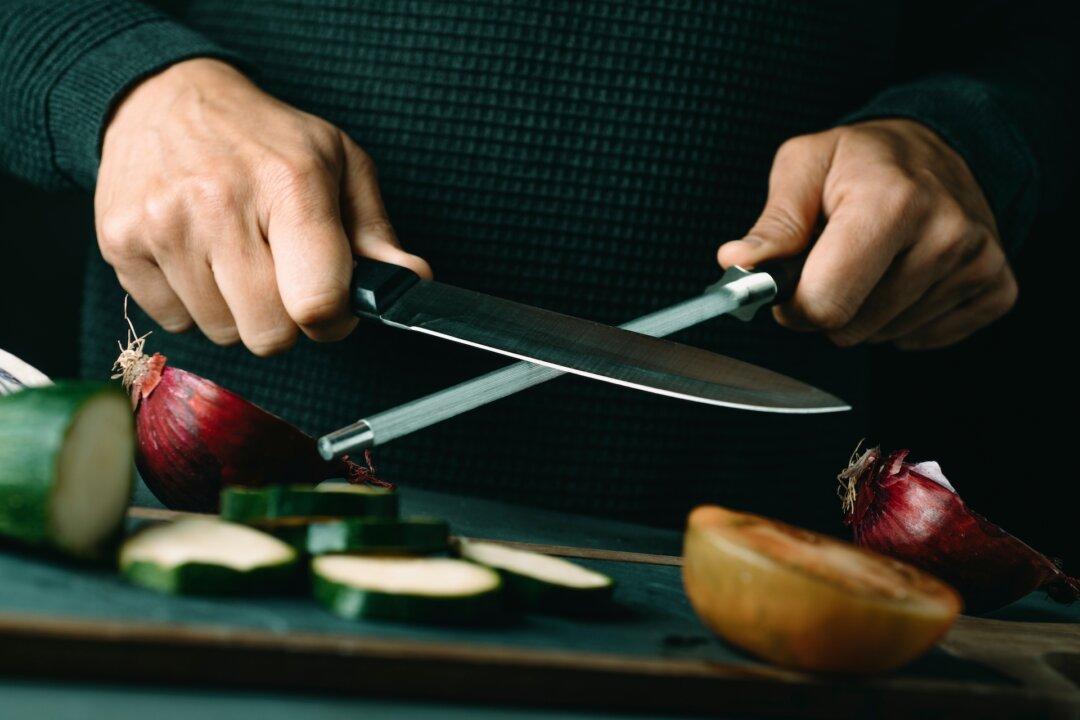Growing up in a small town in the Midwest, my only understanding of curry was the yellow powder in a standard issue wedding-gift spice rack. That powder originated in India, a combination of seasonings that were meant to travel well and mimic fresh curries. Many British returning to the British Isles from the then-colonized subcontinent hoped to bring home flavors they had grown to love.
I never really had a hankering for the blend, and wrongly understood “curry” to mean just that. Years later, the world of curry as a broader category of dishes opened up to me. I learned that Indian, Thai, and Japanese curries existed, and bore little resemblance to the golden powder. My favorite of them all, perhaps, is often referred to as Northern Thai curry.
Gathering Ingredients
Ironically, a cooking class in Krabi, a province in the south, is where I first learned to make a couple of common Thai curry pastes, the so-called red and green, themselves varying in recipe depending on whose kitchen you are in. The golden khao soi actually begins with the basic red paste (prik gaeng kua); its yellow color comes from curry powder and turmeric.
If you are deep into DIY here, by all means, you can make your own curry paste at home, gathering a long list of ingredients that includes chiles, garlic, galangal, and ... shrimp paste, an essential, odiferous umami bomb you don’t want to have left over in the back of the fridge unless you have hazmat protocols. The process is time-consuming more than anything. Don’t feel like you are cheating if you buy the paste pre-made: In Thailand, home cooks often buy the paste at a fresh market, where it is shaped into large mountains and is priced by the kilo.
Red curry paste is standard in most Asian groceries—Lobo and Mae Ploy brands, for instance. If you get to Thailand (or find a good importer), look for a brand called Nam Jai. I can always find pastes with no preservatives and an ingredient list that is entirely made up of actual foods—even without MSG, if that is not your thing. A single 100-gram packet of paste is perfect for a batch that serves four. But different brands may come in varying amounts, so you may need to adjust in the recipe below, based on their suggestions on the packaging.
There is a learning process with curry paste. Determine if it carries the spice level you desire, and adjust as needed. You can always add a couple of chopped Thai chiles to the paste when you first melt it into the coconut milk. Roasted or dried chilies added in mid-cooking can help, too, but be careful, as they can get pretty spicy.
My wife leaves the chiles whole or halved. I prefer to mince them completely and add them at the beginning, so that the heat spreads evenly. My belief is I get more heat from fewer chiles this way (scientific studies still pending). They freeze very well, and I have a good supply at all times.
Chicken legs are the most common form of meat for khao soi, but I chop up breast and thigh meat. Beef is an option, as are vegetarian alternatives, such as mushrooms. Chicken of the woods (a foraged, wild mushroom) is fantastic. Vegetarians, be aware of the shrimp paste and fish sauce.
In a perhaps blasphemous attempt to make my curry a bit healthier, I add broccoli. But steam it first and add it after cooking the khao soi separately, so its sweetness doesn’t change the curry flavor.
Khao Soi (Northern Thai Coconut Curry Noodle Soup)
Serves 4- 3 to 4 tablespoons (one 3.5-ounce/100-gram packet) red curry paste
- 3 cups coconut milk (two 13.5-ounce cans will give you a bit more than this; you can either save some for the next round or add it all to your batch)
- 1 to 3 Thai chiles, minced, halved, or left whole (optional, for more heat)
- 1 tablespoon palm sugar
- 1 teaspoon curry powder
- 1 teaspoon turmeric powder
- 1 to 1 1/2 cups chicken broth (Maggi is a popular brand with the Thai)
- 1 pound chicken legs or cut up breast meat (or pork or beef, or halved fresh mushrooms)
- 2 tablespoons fish sauce (or more to taste)
- 1 16-ounce package Chinese-style egg noodles
- Thinly sliced shallots
- Chopped pickled mustard leaves
- Lime wedges
- Cilantro
- Crispy fried noodles (see Note)
Then add 1 cup of coconut milk and let that mix in and start to bubble. Stir in the palm sugar, curry powder, and turmeric powder, and then add the remaining coconut milk, chicken broth, and meat. Turn the heat down a bit to let it simmer for another 15 minutes. Add the fish sauce to taste. It should be a little salty, not bland.
Prepare your noodles according to package instructions, distribute them among four bowls, and ladle in the curry.
Now comes the fun part: Accessorize! Top each bowl with thinly sliced shallots, chopped pickled mustard greens, and a squeeze of fresh lime. Add a bit of cilantro strewn on top, along with some crispy fried noodles for crunch.
Does it all sound complicated? Be patient: It’s worth it!





